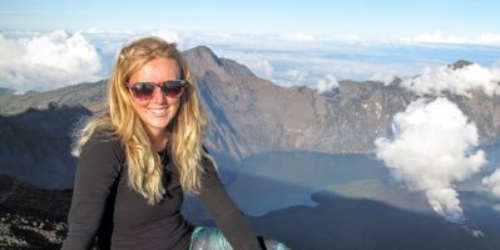Planning for a warmer world: better predicting hurricane rainfall in the Caribbean

Hurricanes can savage small island states: the Caribbean has been battered by 264 of them since 1960. Will our changing climate alter their frequency or intensity?
With around 25 million Caribbean people—and the vast majority of the region’s infrastructure—residing within 1.5km of the coast, preparing appropriately for what’s to come could be the difference between life and death.
The challenge
More regular extreme heat, less regular extreme cold and more intense precipitation: small island developing states (SIDS) are already feeling the impact of a 1°C rise in temperature. Even if the Paris Agreement signatories manage to limit global warming to 1.5°C, SIDS are likely to be disproportionately affected by severe weather—despite being among those who’ve contributed least to manmade climate change.
In 2019, Hurricane Dorian caused an estimated $2.5bn of devastation when it stalled over the Bahamas as a highest category 5 storm. In 2017, Puerto Rico’s death toll from Hurricane Maria probably exceeded 1,100 once disease outbreaks and other indirect impacts are factored in.
However the costs are measured, they’re high. Knowing what may be in store can go a long way towards mitigating them. But Caribbean islands rarely benefit from the same resourcing for hurricane analysis as the nearby US coastline.
What we're doing
By combining a hurricane model with existing global climate models, we can make more accurate predictions about the impacts of hurricanes in different climate scenarios—without traditionally high costs.
Using these models, we can gauge how many hurricane-induced extreme rainfall events islands might experience in both 1.5°C and 2°C warmer climates. Our findings are important because they show that the impacts are likely to vary within the same region.
In Puerto Rico, for instance, hurricane rainfall currently considered to have a 100-year frequency is more than twice as likely in a 2°C warmer climate. Meeting the 1.5°C target of the Paris Agreement sees that frequency drop to roughly its current rate. By contrast, in the Bahamas, a 100-year event becomes three times more likely regardless of whether the warming is 1.5°C or 2°C.
How it helps
Our analysis suggests that more extreme hurricane rainfall in the Caribbean is likely under both 1.5°C and 2°C global temperature rises—but it won’t necessarily have the same effect for every island.
This is powerful knowledge, helping communities improve long-term planning and infrastructure resilience in a more targeted way than would otherwise be possible without such low-cost, accurate computer modelling.
Investigators
- Emily Vosper, Geographical Sciences
- Dr Dann Mitchell, Geographical Sciences
- Kerry Emmanuel
 Lead researcher profile
Lead researcher profile
Emily Vosper, Geographical Sciences
Related research centres
Blog
Read more about Caboteer Leanne Archer's work around this topic.
World Water Day: Climate change and flash floods in Small Island Developing States